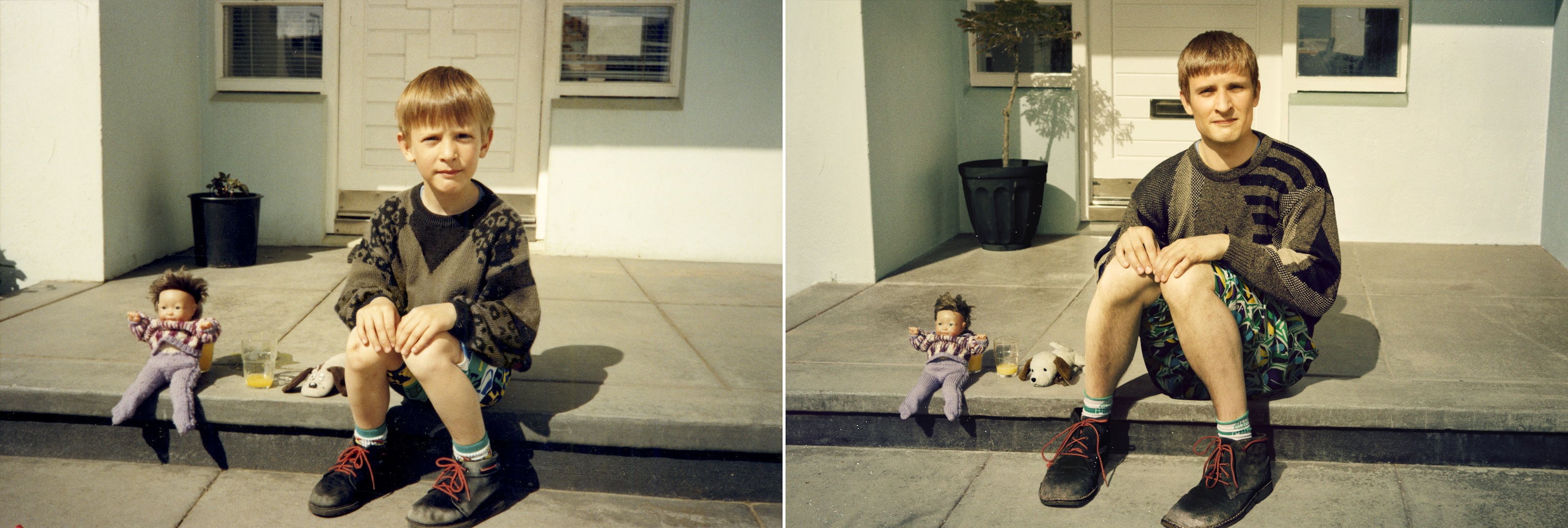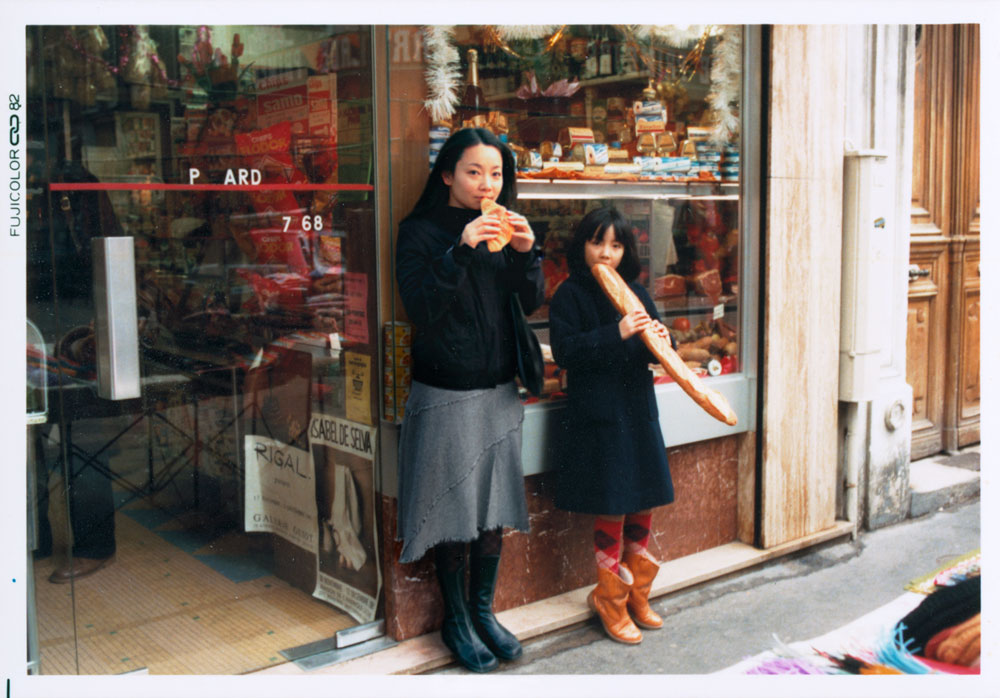

Daily Archives: October 2, 2017
Filters
Archive Photography: Ugne Henriko (Mother and Daughter) vs Irina Werning; re-staging images; re-enacting memories

Ugne Henriko, Mother & Daughter
I really like this photograph because it accurately shows the aspects of similarities between mother and daughter from a documentary side but also the tabloid side shows an exaggerated and staged side beyond the physical appearances that are similar but the deeper meaning between the two similarities of the character too. For example the documentary side highlights the physical similarities of mother and daughter and how their likeness brings about a connection as if they are programmed and the daughter is another version of her mum. This is so much so that it is hard to tell who is the mum and who is the daughter. Interestingly I believe that this style of documentary photography incorporated spreads the message of the deep love between both subjects. This now borders and touches upon the idea of Tableaux photography in which it describes the emotion and relationships between each subject on a personal level. Clearly with their their similarities they appear close, however with the fact that the photograph has clearly been manipulated to look a quite a dark, sad scene which then poses the question about whether they have quite a staggered relationship. It appears that despite at face value they may have similarities, but under the surface it is clear that there is a strong and similar sense of sadness expressed towards one another. This is evident in particular features such as high levels of contrast – increasing the sharpness of the feelings towards each character.

Irene Werning, Back to the Future
I like these two photographs based on an archive approach to photography. The boy on the left is clearly a child and the boy on the right is his older self re-united with the world of his childhood. This photograph is interesting because it suggests that the boy growing up hasn’t grown up very much at all and is still the same person despite how much one goes through growing up into adulthood. This is strikes me as interesting because it goes against the common experience that most people change immensely throughout their childhood. It almost says to me that this particular person had very good memories of his childhood and with that, relives his childhood today. The lighting I also like too is one which is quite mellow and washed out with strong raw colors. This shows how distant this memory of himself as a little boy is, however with these warm colors, this communicates to us that these are positive memories. I like how this photograph is distinct in that it shows quite positive and happy emotions referencing to the character’s past because it is quite relatable to many people’s childhood’s themselves.

This photograph is another comparison of the similarities and differences of how time changes us through our of journey of life. I find this photograph interesting because again, it is a recreation of the girl’s childhood, however on purposefully, it doesn’t try to appear directly identical in the appearance. In fact the roles reverse in the sense that instead of on the surface the characters appearing identical and having a deeper meaning beneath the surface, here the photograph shows on the surface clear differences in each character but under the surface that is where the similarities are apparent. I like how the characters are next to each other however we can clearly see the differences in the characters themselves such as their clothes, food and general posture. However the fact both are partaking in the same activity in the same location shows an inextricable link between both characters. The fact there is so many apparent differences arguably shows the similarities are that both enjoy being different.
Martin Parr – Life’s A Beach, Tableaux Artist Inspiration
For my Tableaux shoot I was heavily inspired by Martin Parr’s shoot: Life’s a beach. Despite Martin Parr who uses documentary photography to convey the general feeling of the beach among how it is felt among the public. I decided to use this as a way off showing Tableaux photography to express the difference between the general public’s view of the fun possibilities at the beach and focusing on my most personal and intimate feelings of the beach that are specifically constructed.I believe in my shoot, without including people in my photographs, I can construct the camera’s viewpoint as my own as I am seeing it through my own eyes. Martin Parr however by focusing on how other people respond and interact with the beach in an environment where lots of people are doing the same thing, it appears to describe the general attitude to what the beach is associated with. However with my shoot I wanted to not include anyone else so I chose more of an isolated beach to construct more of my own pure reconstruction of memories.

This photograph particularly strikes me because it is somewhat likened to my own shoot in the sense the little girl portrayed is away from a lot of the large crowds and hustle and bustle. This re-enforces my view of showing mine or someone else’s personal relationship with the beach. However the fact we can’t see the girl’s facial expression, how she is looking away towards the larger crowds and the focus on the Union Jack, is suggestive that this girl is somewhat institutionalized with the rest of society. She may be enjoying herself which is most evident by the warm, bright lighting which the photograph is shot in, but it shows that she is still somewhat influenced by society. My photographs aimed to contrast with this in the sense I wanted to depict a very uninfluenced view of from society of my childhood memories on the beach.

I like this photograph, as again it shows the common belief of the sea being associated with the beach. I on my shoot decided to take photographs of only my kayak and boat incorporating them with the sea as most of my time I spent on them rather than swimming as that is most personal to me. However Martin Parr chose swimming as more people do that when at the beach and so he could document this. My form of Tableaux photography in a sense is somewhat like documentary photography because I am essentially documenting my own feelings towards the beach by constructing certain childhood memories that are personal to me. I find it interesting how like in the previous photograph despite the warm lighting and playful nature of the people involved in the photograph showing they’re clearly enjoying themselves, we still can’t see anyone’s face – emphasizing the idea of how most people when it comes to the beach, are all the same.
